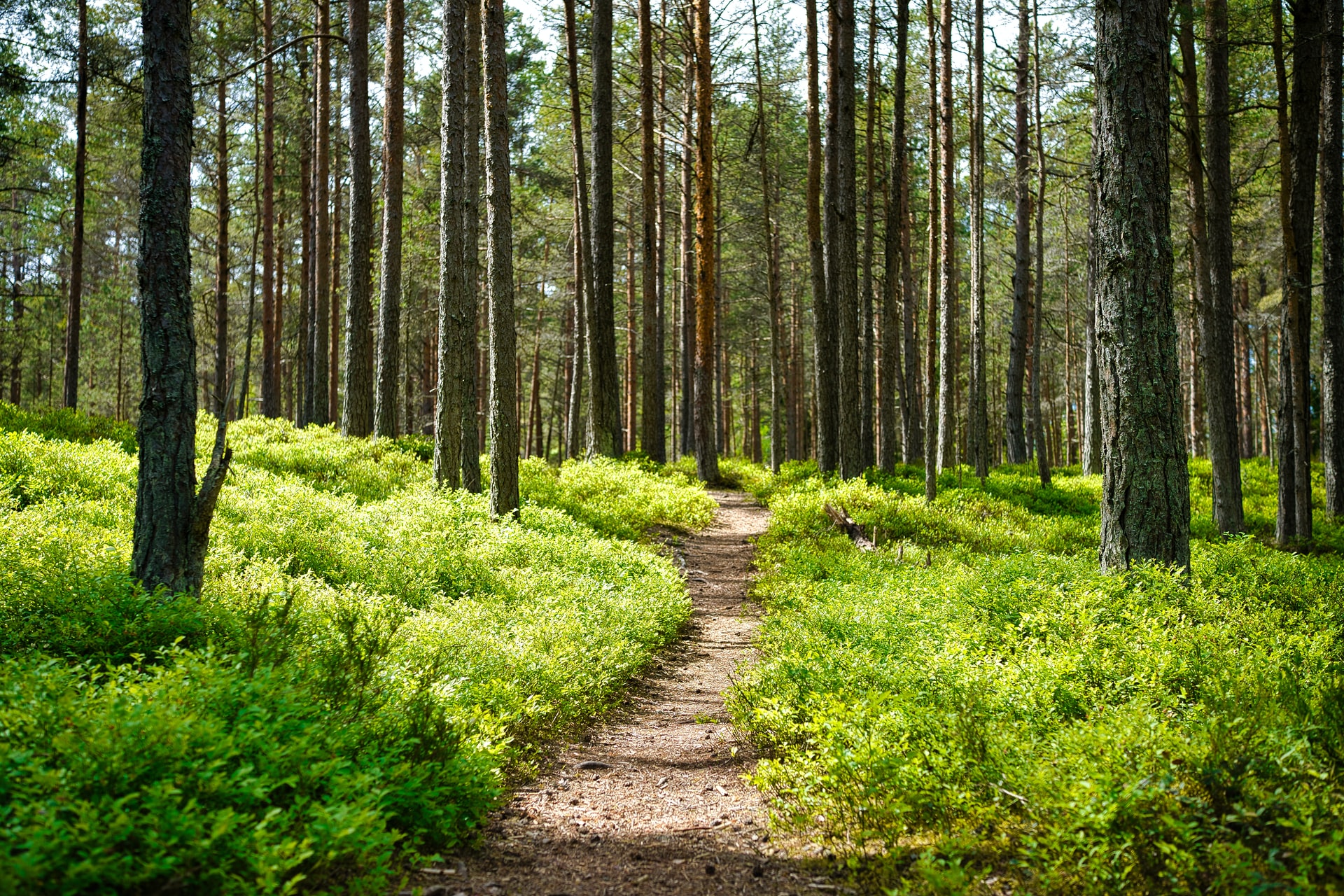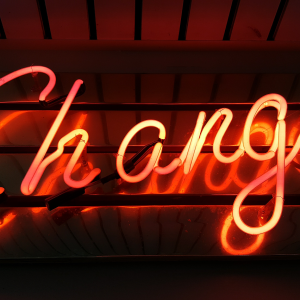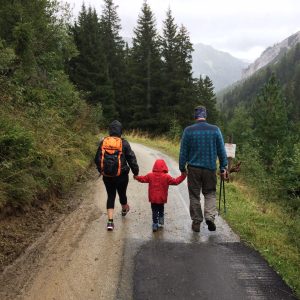Please come and join me on a journey of hope…
The climate crisis is scary for everyone and the fear it causes can make us feel powerless to confront it. Despite that fear, I’d like to invite you to join me on a ‘Journey of Hope’ – for the sake of all who follow behind us….
Why am I taking climate action now?
In April 2020, a new baby arrived in my family- the first in 30 years. I’ll call him ‘Tyrone Casey’ or ‘Ty’ for short. Ty is a Covid19 baby. When he was born all members of our family were locked down miles away from each other to ‘help prevent the spread of the Covid19 virus’. We may have been physically safer in lockdown, but emotionally we were sad and sore to be missing out on the biggest event that had happened in the family for years.
One of the few good things about a pandemic lockdown is that it gives time and space for reflection. I used the time to look closely at the world as Ty and his generation will experience it, and to compare that to my own childhood experiences.
One of the biggest changes is the physical state of the planet itself. Never before has any generation had to cope with global heating, biodiversity loss and accelerating threats to the fundamentals of life like our water, our soils and the quality of our air. Having a direct link to the newest generation in the world creates a strong incentive to think seriously about what these threats will mean for children growing up now. So I did some research and- it scared me!
Human activity caused climate change and we’re still driving it forward!
Since 1988 we have had an Intergovernmental Panel on Climate Change [the IPCC] which is the United Nations body for assessing the science related to climate change. For years the IPCC pointed to the importance of human behaviour in driving global heating, but it always stopped short of saying the science showed that we were causing the climate crisis. That changed in the 2021 Report which said that the science now ‘shows that emissions of greenhouse gases from human activities are responsible for approximately 1.1°C of warming’ Climate change widespread, rapid, and intensifying – IPCC — IPCC accessed 10/8/21 [See under section entitled ‘Faster Warming’.]
The direct causal link between humanity’s greenhouse gas emissions [GHGs] and the heating of our planet is finally beyond doubt. By burning too many fossil fuels and pursuing too many environmentally unsustainable activities, we have changed the patterns of the planet’s systems in a way that threatens its potential to support life. Any life- including the life of our own species.
How bad can this get?
The amount of damage global heating will cause is still unknown. This is because the processes that will determine how bad things get are still ‘live’ and continuing processes. In other words, we haven’t stopped damaging the planet yet! How bad the final toll of damage will depend on how long we keep doing the things that are disrupting our planet’s systems. The IPCC can’t predict precise levels of damage because it can’t know how we will all behave in the future. So instead it produces models of what the likely damage will be if our emissions continue at a high, medium or low level. No one knows yet which model predicts humanity’s actual future.
But one message from the IPCC’s 2021 report is clear: we have reached the point where we can’t avoid the consequences of the heating we’ve already caused. Climate related harm will be part of the future of all middle-aged and older generations of people alive today. It will affect our children and grandchildren too, and they will be affected for a much longer proportion of their young lives.
What sort of harm are we likely to see?
This depends on where we are on the globe and how badly climate change is already affecting our region. The global average rate of warming – currently 1.1 degree celsius above pre industrial levels,[1] does not represent the actual temperature changes experienced in specific places around the planet.
[1] The IPCC uses the reference period 1850–1900 to represent pre-industrial temperature. See e.g. the glossary to the IPCC Special Report on Global Warming of 1.5°C[accessed 20/12/21]. https://www.ipcc.ch/sr15/chapter/glossary/
These short pieces explain why ‘average’ 1.1 degrees celsius does not feel the same in different places around the globe:
Global Distribution – Earth’s Heat Balance
Which parts of the planet are warming the fastest, and why? | MIT Climate Portal
So the mild- and manageable-sounding ‘1.1 degrees of warming’ that climate change news coverage generally speaks about is misleading in terms of what people are already experiencing on the ground in different countries. The fact is that some parts of the globe have already experienced as much as a 10 degree C rise in temperature, compared to the levels of heat they normally experienced in the past:
WMO recognizes new Arctic temperature record of 38⁰C | World Meteorological Organization
It is because the phrase ‘global warming’ gives a misleading impression of the real life impacts of what this temperature change already means in so many places that I don’t use that term in this blog. I call it ‘global heating’, and in many parts of our world this already means severe, life-threatening ‘overheating’ as this video shows Weather Events 2021 – Heat Dome (unprecedented heatwave) (Canada & USA) – ITV News – 30th June 2021
Although the specific level of temperature rise people will experience varies according to geography, the general principle governing the effects of global heating is the same for all of us.The principle is ‘the higher the temperature goes, the worse the damage will be’. If average global heating hits 1.5 degrees then future damage will be worse than whatever your country is already seeing at ‘average 1.1 degrees’ hotter. In many places around the globe this will mean catastrophic overheating of the landscape that will threaten all life. It will also threaten the viability of these regions for any kind of productive use- like farming, forestry or any of the other ‘ecosystem services’ [2] we have all enjoyed until now.
[2] The following definition of ‘ecosystem services’ is given by UK National `Ecosystem Assessment: ‘Ecosystem services are the benefits provided by ecosystems that contribute to making human life both possible and worth living. Examples of ecosystem services include products such as food and water, regulation of floods, soil erosion and disease outbreaks, and non-material benefits such as recreational and spiritual benefits in natural areas.’ see UK NEA [accesses 20/12/21].
On the island of Ireland we’re already seeing severe consequences from the heating that’s happened so far. If we take the year 2020 as an example, and we just look at flooding events that happened on this island in that year, they included:
October 2020: floods in Cork and Bantry town, October 2020 (Storm Barbara).
September 2020: floods in Clifden, county Galway: Here’s a quick reminder of how that looked: https://twitter.com/95_dazza/status/1301095431917711360?ref_src=twsrc%5Etfw%7Ctwcamp%5Etweetembed%7Ctwterm%5E1301095431917711360%7Ctwgr%5E%7Ctwcon%5Es1_c10&ref_url=https%3A%2F%2Ffloodlist.com%2Feurope%2Fireland-galway-clifden-floods-september-2020
August 2020: floods in Bantry and Bandon, (county Cork), and widespread flooding in Northern Ireland affecting Newcastle, Maghera, Draperstown & Cookstown: (storm Francis).
February 2020: the river Shannon overflowed causing widespread damage in the Shannon Basin: Here’s what that felt like for one local man: Can worsening floods along Shannon basin be stopped?
If average global temperature rises to 2 degrees hotter, then the damage in all countries will be much greater than whatever local populations are already suffering now. Any more heating will mean worse wildfires than those we’ve already seen in Australia and the west coast of America, and worse droughts than those that are already bringing famine and homelessness to poor countries like Afghanistan and Madagascar Severe drought threatens three million Afghans | NRC ; Climate Change is causing famine in Madagascar. Here’s how | World Economic Forum
And of course worse flooding and more droughts in Ireland.
Does another degree or two really matter?
With consequences like those we’re already seeing all around the globe, every fraction of a degree of heating really matters. Small further increases will have big effects on the future quality of life for everyone on the planet. In many cases the impacts will be life threatening as this article from Nasa explains A Degree of Concern: Why Global Temperatures Matter – Climate Change: Vital Signs of the Planet accessed 8/8/21
How are our Governments handling these risks?
One of the scariest aspects of the IPCC’s work is what it shows about how governments across the globe have handled the facts it presented to them. Despite the Panel’s ‘Code Red Warning’, despite all the targets Governments around the world have signed up to- the facts show that our collective global emissions are continuing to rise. In December 2020 global GHG emissions were 2% higher than they were one year earlier – and that was despite the reduction in energy use caused by the pandemic disrupting economic activities across the globe: After steep drop in early 2020, global carbon dioxide emissions have rebounded strongly – News – IEA accessed 5/10/21
Global annual rises in GHG emissions at this rate put us all into very dangerous territory- territory where we may cross tipping points that will speed up global heating to the point where nothing we can do will limit the damage. Whatever they may be saying, Governments around the world are continuing to do ‘business as usual’, and that puts us all on a deadly trajectory. If emissions continue at today’s pace, then the world will be an average of 3 degrees hotter by the end of this century. That level of extra heating is a huge threat to every person alive today: Dramatic climate domino effects could be unleashed after less than 2 degrees of warming, a new study reveals. Accessed 11/8/21
A world on its way to being 3 degrees hotter by the end of this century is a horror picture- as this excerpt from the book ‘The future we choose’by global heating experts Christina Figueres and Tom Rivett-Carnac shows. Set in 2050, it’s their best guess of what our world would look and feel like if we continue on the trajectory global governments are following right now: How the World Will Look in 2050 if We Don’t Tackle Climate Change
2050 is not far away: Ty Casey would only be thirty at that time. I wouldn’t want any family of mine to have to struggle with the conditions these experts predict are on the way for him. That world simply does not offer a ‘liveable future’ for the young.
The psychological effects of current circumstances on people everywhere.
When I first looked deeply into what the future world may hold for us, I felt afraid. Fear of such threats is a rational response: indeed it is an essential self-protective reaction that every sane human being is likely to feel- and that’s why lots of other people are feeling exactly the same thing. It has been labelled ‘climate anxiety’ and anyone, adult or child, who makes a truthful assessment of the ecological crises we face is liable to suffer from it. This short article in ‘The Lancet’ describes this phenomenon and some of the uncomfortable effects it can have: Mental health and climate change: tackling invisible injustice . This article discusses how widespread climate anxiety already is in the UK- even among children as young as 6- ‘Overwhelming and terrifying’: the rise of climate anxiety . And Ireland, of course, is not immune, as this Irish Times article shows: Eco-anxiety: Climate breakdown is taking its toll on people’s mental health
For a while, recognizing the real dangers the climate crisis poses for every man, woman and child currently alive on this planet had a paralysing effect on me: I felt I was in the grip of an unstoppable doom that I could do nothing about. That was the point in my journey where I experienced ‘overwhelm’: a panicky sense that ‘there’s nothing I can do about this: it’s just too big for me!’
‘Overwhelm’ lasts until you realise that giving way to it makes you a passenger in your own destiny. It gives away your control, power and influence without so much as a whimper! It makes you part of the very problem you fervently wish would just ‘get fixed’!
But you know, and I know, and every worried youngster on this planet knows- this problem won’t get fixed by wishing. And the evidence shows it won’t get fixed by Governments either; right now they are miles behind where they need to be to keep us, their populations, as safe as we can be. This problem will only get fixed when you, and me, and every ‘ordinary person’ living at this most critical moment in time begins to work towards achieving the change we want to see.
Welcome to “Living Hopefully”!
We all know that achieving something- achieving anything worth doing in life, needs work. We tell this to our children all their lives: ‘You want to be a brilliant guitarist? Go and practice your chords. A physicist? Here are the books. An Olympic rower? Here’s your life jacket- the boat club’s that way.’ All these young hopefuls aspire to an outcome they can imagine for themselves. But they can’t know yet whether they will ever achieve it. They hope for it because, of all the possible futures they might have, the one they select is the one they want the most. They all know instinctively that to make their hoped-for future become the reality of tomorrow, they need to start working for it today. That’s a key part of ‘Living Hopefully’ in relation to the climate crisis too: to make our hoped-for climate future become the reality of tomorrow, we need to start working for it today. And, like the young hopefuls mentioned above, we can’t know yet whether we will ever achieve it. So yes, Living Hopefully does require accepting uncertainty and learning how to get comfortable with it.
‘Living Hopefully’ is more than a wish, an aspiration, or something you would ‘like to see happen if possible’. It is more than simple optimism, though optimism is necessary too. Living hopefully, means actively pursuing the optimistic outcome we want to see through the actions we take now, in real time, each day.
I choose to believe that society-wide action for the best possible future will make a big enough difference to allow planet Earth to heal. That choice is an Act of Hope. It is a conscious and deliberate choice which will have consequences for my personal behaviour. I accept those consequences even though I can’t know yet whether they will achieve the outcome I want. This is what I mean by Living ‘Hopefully’. It means not letting myself dwell on the fear and the uncertainty. It means doing the work needed to deliver the best available future while there’s still a chance to achieve it. It means being determined and not giving up. As Professor David Orr famously said ‘hope is a verb with its shirtsleeves rolled up’. https://www.oberlin.edu/david-orr
Each of us can decide to hope for the best available ending to the climate story and to work towards that, or we can allow ourselves to be overwhelmed by the scale of the risks it poses. I hope that the better future associated with lower average levels of global heating is still possible, and I believe that this is true. There is evidence to support this belief. In its most recent report the IPCC stated: ‘human actions still have the potential to determine the future course of climate’ Climate change widespread, rapid, and intensifying – IPCC – [see under ‘Human influence on the past and future climate’]. For now that’s the best scientific assessment of what’s still possible for us. It may not remain possible for long. If we cross critical tipping points even the chance to change may fade away. World faces disastrous 2.7C temperature rise on current climate plans, UN warns | Climate crisis
So if you’re concerned and you want to do your bit- now is the time to start. What’s left of this ‘decisive decade’ may well be the only time we have to make any difference. So please make it your New Year’s Resolution to join this Journey of Hope today and let’s see how much we can save for future generations to enjoy.
Viv,
Living Hopefully,
© livinghopefully.org
Photo by Maksim Shutov on Unsplash
One thought on “Living Hopefully in 2022”
Leave a Reply
You must be logged in to post a comment.



I’m making it my New Years resolution to live hopefully! Thanks, Viv! Your beautiful blog is very inspiring.